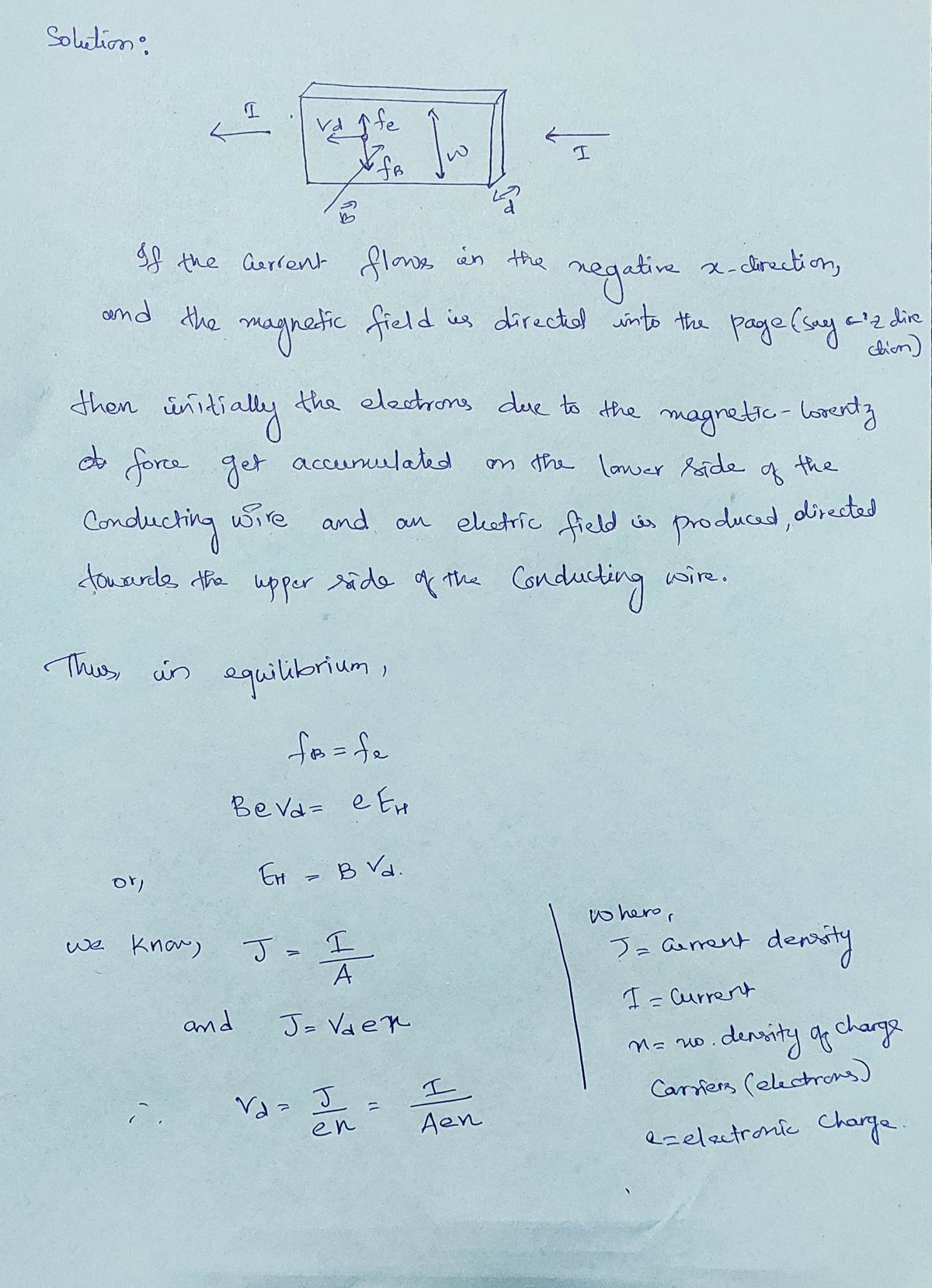When charges moving in piece of material are placed into a region of magnetic field, they feel a eEH force according to F = q(v, × B). The deflection ev,B + + +/+ + + of these moving charges causes a difference in + + + electric potential to be produced in the material perpendicular to both the direction of current, and the direction of the magnetic field. This difference in potential is called the Hall voltage. Show that the Hall voltage across wires made of the same material, carrying identical currents, and subjected to the same magnetic field is inversely proportional to their diameters. (Hint: Consider how drift velocity depends on wire diameter).
When charges moving in piece of material are placed into a region of magnetic field, they feel a eEH force according to F = q(v, × B). The deflection ev,B + + +/+ + + of these moving charges causes a difference in + + + electric potential to be produced in the material perpendicular to both the direction of current, and the direction of the magnetic field. This difference in potential is called the Hall voltage. Show that the Hall voltage across wires made of the same material, carrying identical currents, and subjected to the same magnetic field is inversely proportional to their diameters. (Hint: Consider how drift velocity depends on wire diameter).
Related questions
Question

Transcribed Image Text:When charges moving in piece of material are
eEH
placed into a region of magnetic field, they feel a
force according to F = q(v, × B). The deflection
%3D
evB
+ + +/+ + + + + + +
of these moving charges causes a difference in
electric potential to be produced in the material
perpendicular to both the direction of current,
and the direction of the magnetic field. This
difference in potential is called the Hall voltage.
Show that the Hall voltage across wires made of the same material, carrying identical currents,
and subjected to the same magnetic field is inversely proportional to their diameters. (Hint:
Consider how drift velocity depends on wire diameter).
Expert Solution
Step 1

Step by step
Solved in 2 steps with 2 images
